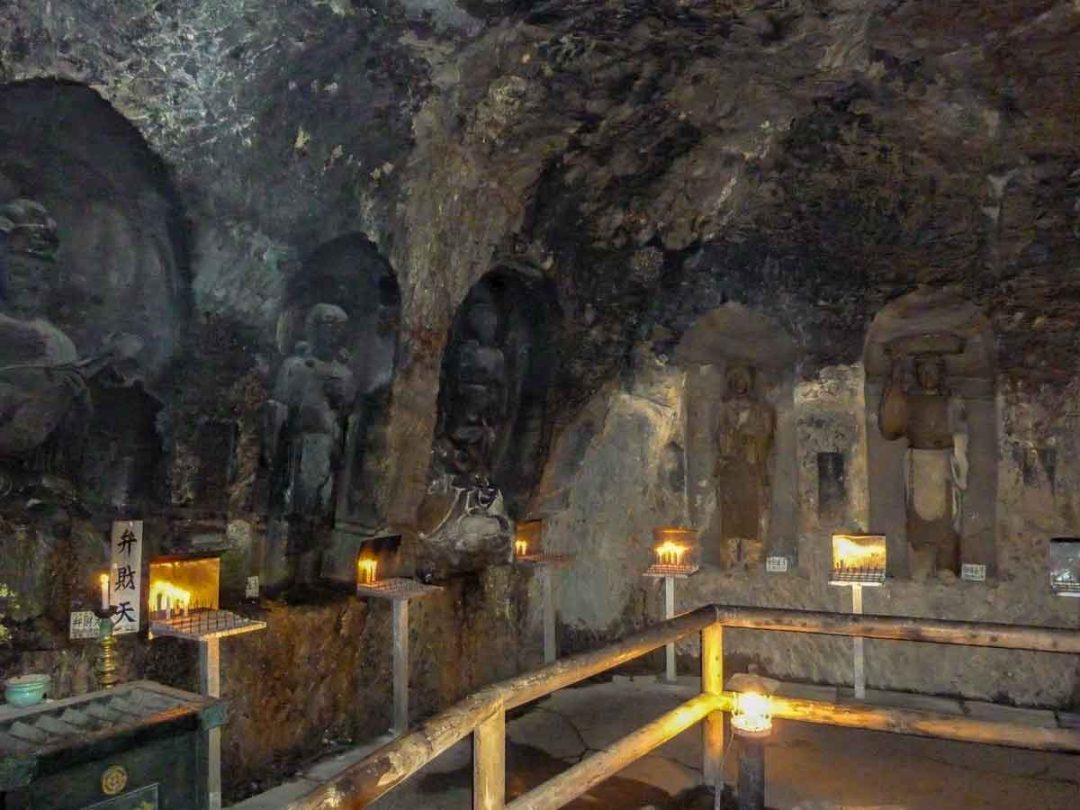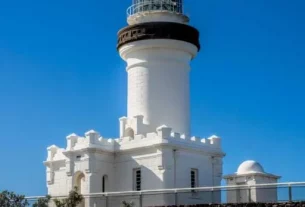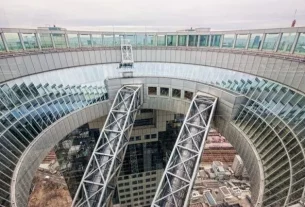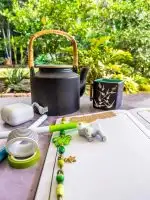Tokyo is not only an incredible city in its own right but a fabulous base to explore the surrounding areas and a Kamakura day trip is a great choice to get started. Whether you are after a foodie experience, seasonal scenery, beaches to relax or the heritage temples and shrines of the old capital, Kamakura is a fantastic area to explore.
Read more: Out top recommendations for day trips from Tokyo
Table of Contents
How to get from Tokyo to Kamakura
Using JR trains
It will take under an hour to get from Tokyo to Kamakura station by Japan Rail train. From Tokyo station you will use the JR Yokosuka line, and the trip will cost Y940. From Shinjuku station, the Shonan Shinjuku Line will add a couple of minutes to the trip but still take less than an hour and the price is the same.
JR is a simple, affordable and convenient option for most visitors. You can pay using an IC card such as SUICA or PASMO, buy a ticket at the ticket machines near the gate or use a Japan Rail Pass if you have one, although we no longer recommend that pass for most tourists.
Using the Odakyu Enoshima-Kamakura FreePass
If you are looking for the most affordable way to get between Tokyo and Kamakura then the private railway, Odakyu Enoshima-Kamakura pass, offers that. The pass costs Y1640 and you get the return tickets from Tokyo, unlimited use of the Enoden Line between Enoshima and Kamakura and discounts at some attractions and eateries in the region.

This option takes at least 1 hour and 40 minutes from Shinjuku to Kamakura so quite a bit longer than JR because it uses different train lines and requires you to change railways to complete the trip from Enoshima across to Kamakura.
This option is useful if you are a fast traveller and want to include both Enoshima and Kamakura on your day trip itinerary. If you are considering this option you may want to also read our Enoshima Guide for that section of the day.
Highlights of the Kamakura day trip itinerary
This one-day itinerary is intended for first-time visitors who will want to see the most popular attractions it is easy to fit into a single day but we will include some additional ideas if you feel you can fit in a couple of additional stops along the way.
We will add a second article with a Kamakura Hiking Trail itinerary soon that takes you through bush trails, narrow laneways, parks and shrines to discover a quieter side of the city with a focus on nature and some less familiar attractions.
The highlights of this day trip include:
- Walk the historic Dankazura path
- Visit Tsuragaoka Hachimangu Shrine
- Eat and shop along the historic Komachi-dori
- Explore Hasedera Temple
- Discover historic caves in the hillside
- Enjoy views out to Kamakura’s popular beaches
- See the Great Buddha at Kotokuin temple
- Ride the Enoden electric railway
Kamakura Station
We start our itinerary at Kamakura JR station, which is the arrival point for most visitors to the city. The Enoden, Enoshima Electric Railway station is located directly behind it if you have arrived with the Odakyu pass.
We will exit across the bus station following the short street opposite and then turn left. If we had headed directly to the left of the bus station under the Torii gate we would be on the Komachi-dori but instead, we will come back that way later and find some interesting lunch stops after the shrine.
Walking the Dankazura
At the end of that short street, turn left into Wakamiya Oji Street and about 100 metres down you will see a large vermillion torii gate. Walk down and cross over to the Torii, it is at the start of the long straight pedestrian-only path that leads to the Tsurugaoka Hachimangu Shrine.
The 800-metre path was built by the first Shogun, Minamoto no Yoritomo as part of his prayers to the Shrine for the safe delivery of a boy child. Functionally the path narrows as it approaches the Shrine giving the optical illusion it is longer than it is to thwart an enemy attack. The Dankazura is planted with cherry blossom trees and azaleas that are stunning in the early spring although its leafy canopy makes for an enjoyable walk in all seasons.

Tsurugaoka Hachimangu Shrine
At the end of the Dankazura, you come to the entrance to Tsurugaoka Hachimangu Shrine.
Kamakura was the capital of Japan in the late 12th century when the Samurai and Shogun rule was established. Tsurugaoka Hachimangu was originally built in 1063 and was the shrine of the Minamoto clan. Hachiman is the Kami of the shrine, the deity of the Samurai and today often referred to as the god of war or warriors.
Kamakura was a significant seat of feudal power at this time, in 1250 AD Kamakura was the 4th largest city in the world and this shrine was a critical part of its culture and success.

The shrine has an impressive scale in keeping with its importance in Japanese history. In addition to the typical shrine structures, there are beautifully landscaped rest areas, a cafe and a museum set around the ponds. You’ll often spot something going on here from Shinto weddings in the Maiden to festivals and archery competitions.
As with almost all shrines around Japan entry to the main grounds is free.
Read more: Planning your visit to Tsurugaoka Hachimangu Shrine
Komachi Dori
After exploring the shrine head back towards the station. Don’t reverse the earlier path down the Dankazura but instead walk one street over and explore Komachi Dori. This is a fantastic eating and shopping street with lots to see and try.
You want to take a stroll down here and stop at whatever catches your eye. We do have a couple of suggestions though to get you started because we are all about trying the local favourites.
- Shirasu or whitebait is a local delicacy in this coastal town. Try it at many of the small cafes and restaurants or as a street food snack made into croquettes or on a stick.
- Kamakura Chacha is the stop for quality matcha treats. They are popular for soft-serve matcha ice cream but have a great variety of green tea sweets and treats on offer.
- Tomoya sells a variety of sweets but is best known for its Daibutsu-yaki, a filled pancake similar to a Taiyaki but these are pressed into a cake in the shape of a Daibutsu head with a sweet or savoury filling. If you like your yaki in a more refined form then Arbre Noir Yakumi is the place to go with their stamped green tea pancake enclosing a nutty sesame paste, so good.
- Croquettes are always a popular snack in Japan fried with crispy panko crumb on the outside. Menchi katsu with a meat filling are popular but I usually prefer the potato or specialty alternatives like the crab cream.
- For the Ghibli fans, at the end of Komachi Dori closest to the station is an adorable Ghibli shop with all sorts of themed gear but the overall styling of the store is a must for fans of the studio.
Hasedera
Back at the station, there are two options to get to the next attractions, you can either head to the Enoden station on the far side and catch the electric railway to Hase station or walk the roughly 2km which will take around 30 minutes. The fare for the train is Y200 but it is included if you have the Odakyu freepass. From Hase station to Hasedera Temple is only 300 metres.

Hasedera is one of the first temples we visited in Japan back in 2010 and it became a firm favourite, one of the few I will revisit whenever we are in the area.
It is a large complex with a variety of things to see so allow enough time to have a good look around. It is set on the side of a mountain called Kannon-zan and its buildings and gardens are set on the different levels and slopes. A variety of flowers are planted throughout the gardens and all months of the year will see at least a couple take the spotlight. There are also fabulous views from the higher level out to the town and bay.

Hasedera Temple was established in 736 AD to enshrine a wooden carving of Kannon. The carving is housed in the Kannon-do hall and is a 9.18 metre tall statue known as the 11-headed Kannon, the goddess of Mercy (or Avalokiteśvara in Tibetan Buddhism). The 11 smaller heads are placed like a crown around the head and represent the stages of enlightenment.
Admission to the temple costs Y400.
Benten-Kutsu Cave
The Benten-Kutsu cave is located within the temple grounds on the lower level to the far right of where you enter. Walk past the pond and the entrance to the cave will be on your left marked with a Torii gate.
Benzaiten, whom the caves are named for, is both a Buddhist Bodhisattva and a Shinto deity. In Buddhism, she appears in the Lotus Sutra and is often depicted holding a traditional Japanese lute or mandolin. In the traditional Japanese Shinto faith she is the deity of everything that flows; words, music, water and by extension knowledge.


The caves are also important as it is believed that Kōbō Daishi spent some time in seclusion there in the 9th century when he carved the small Benzaiten statue that is displayed in the Benten-do Hall that you pass just before you come to the cave entrance.
Kōbō Daishi was a Japanese Buddhist monk born in the 8th century who had a significant role in the introduction of Buddhism to Japan. He was also the founder of the Shingon school of Buddhism. You’ll find many spots around Japan with a connection to him such as Mt Misen on Miyajima Island and the Golden Pavillion in Kyoto.
Read more: More information on the Benten-Kutsu cave
The Great Buddha and Kotoku-in
The final stop on our one day itinerary for Kamakura is the Great Buddha statue which is at Kotoku-in temple. It is a 10 minute walk (750 metres) from Hasedera to Kotoku-in temple. There is a footpath, good English signage and usually a steady flow of foot traffic between the two. T
This bronze Buddha statue is the third largest in Japan, the biggest is at Mt Nokogiri in Chiba Prefecture and the second largest at Todaiji in Nara. This one is particularly interesting as you can go inside the Buddha seeing how it has been constructed and reinforced over the years since it was originally cast in 1252.
Winding up your day trip in Kamakura
If you are ready to head back to Tokyo I would suggest using the Enoden Railway again from Hase back to Kamakura but you can walk the 2km if you prefer. There are plenty of cafes, eateries, shops and snack vendors in the streets around the train station if you want to relax before heading back.
Alternatively from Hase station, you can continue along the coast towards Enoshima and explore there or take an interesting route home using the hanging monorail to Ofuna then pick up the train to Tokyo.
Another option is to walk down to Yuigahama Beach as it is only about 300 metres from Hase Station. From here you can enjoy a walk on the sand or a drink overlooking the ocean.
If you want to extend the places you explore in north and central Kamakura, you could add the famous Zen temple, Kenchoji, the bamboo gardens at Horokuji or Zeniarai Benten Shrine where visitors wash their money in the spring. You would add any of these after Tsurugaoka Hachiman Shrine and before heading out to Hase.



